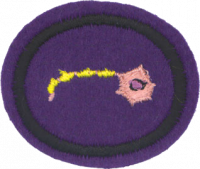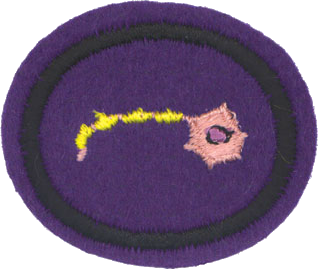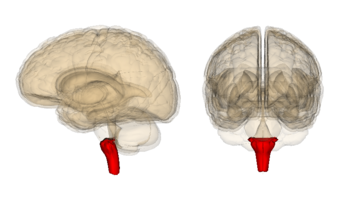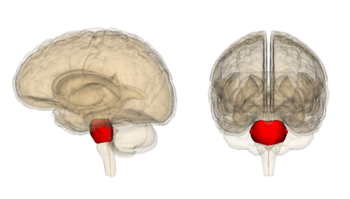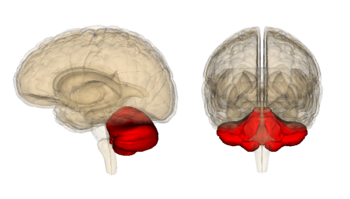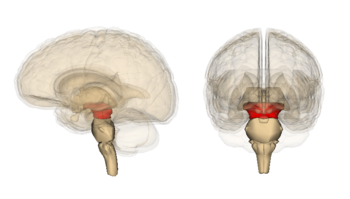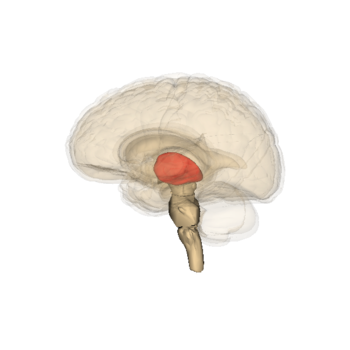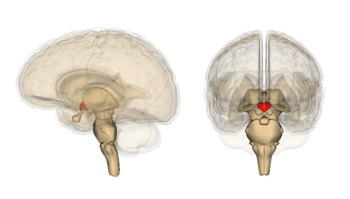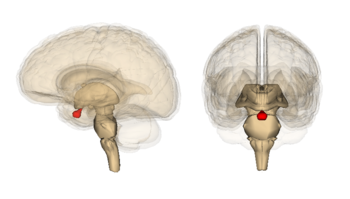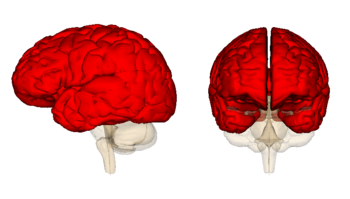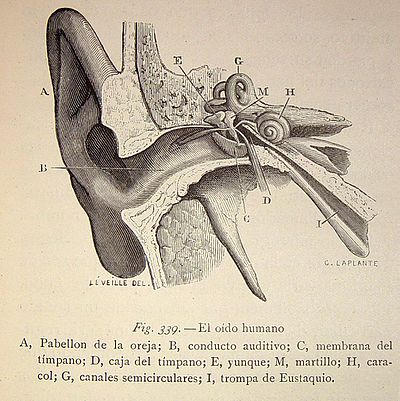|
|
| (36 intermediate revisions by 2 users not shown) |
| Line 1: |
Line 1: |
| − | <languages /><br />
| + | {{HonorSubpage}} |
| − | <noinclude></noinclude>
| |
| − | {{honor_desc | |
| − | |stage=00
| |
| − | |honorname=Cerebro y conducta
| |
| − | |skill=2
| |
| − | |year=1999
| |
| − | |category=Salud y ciencia
| |
| − | |authority=Asociación General
| |
| − | |insignia=Brain and Behavior Honor.png}}
| |
| − | | |
| − | <noinclude></noinclude>
| |
| | <section begin="Body" /> | | <section begin="Body" /> |
| | {{ansreq|page={{#titleparts:{{PAGENAME}}|2|1}}|num=1}} | | {{ansreq|page={{#titleparts:{{PAGENAME}}|2|1}}|num=1}} |
| − | <noinclude><div class="mw-translate-fuzzy"> | + | <noinclude></noinclude> |
| − | </noinclude> | |
| | <!-- 1. Ser capaz de etiquetar un diagrama o un modelo de un cerebro humano que incluya las siguientes partes: --> | | <!-- 1. Ser capaz de etiquetar un diagrama o un modelo de un cerebro humano que incluya las siguientes partes: --> |
| | {|border=0 cellpadding=10 | | {|border=0 cellpadding=10 |
| Line 30: |
Line 18: |
| | |[[File:Telencephalon2.png|thumb|350px|center|h. El '''telencéfalo'''.]] | | |[[File:Telencephalon2.png|thumb|350px|center|h. El '''telencéfalo'''.]] |
| | |} | | |} |
| − | </div>
| |
| | | | |
| | <noinclude></noinclude> | | <noinclude></noinclude> |
| Line 85: |
Line 72: |
| | <noinclude></noinclude> | | <noinclude></noinclude> |
| | <!-- 6. ¿Cómo son los sentidos del gusto y el olfato similares y cómo son diferentes? Dibujar un mapa de qué parte de la lengua corresponde a los siguientes sabores: dulce, agrio, amargo y salado. Instrucciones: Pedir a alguien que moje un hisopo en uno de los siguientes: agua de azúcar (para dulce), jugo de limón (para agrio), agua tónica (amarga) o agua salada (sal) y a continuación, tocar ligeramente diferentes partes de su lengua. Notar que las zonas de la lengua gustan la solución que se está poniendo a prueba. Enjuagar con agua pura entre cada prueba y el uso de un nuevo hisopo para cada prueba. --> | | <!-- 6. ¿Cómo son los sentidos del gusto y el olfato similares y cómo son diferentes? Dibujar un mapa de qué parte de la lengua corresponde a los siguientes sabores: dulce, agrio, amargo y salado. Instrucciones: Pedir a alguien que moje un hisopo en uno de los siguientes: agua de azúcar (para dulce), jugo de limón (para agrio), agua tónica (amarga) o agua salada (sal) y a continuación, tocar ligeramente diferentes partes de su lengua. Notar que las zonas de la lengua gustan la solución que se está poniendo a prueba. Enjuagar con agua pura entre cada prueba y el uso de un nuevo hisopo para cada prueba. --> |
| | + | |
| | + | <div lang="en" dir="ltr" class="mw-content-ltr"> |
| | + | Draw a map of which part of the tongue responds to the following tastes: sweet, sour, bitter, salt. Instructions: Have someone dip a Q-tip into one of the following: sugar water (for sweet), lemon juice (for sour), flat tonic water (bitter) or salty water (salt), and then lightly touch different parts of your tongue. Notice which areas of the tongue taste the solution that is being tested. Rinse with pure water between each test and use a new Q-tip for each test. |
| | + | </div> |
| | | | |
| | {{clear}} | | {{clear}} |
| Line 100: |
Line 91: |
| | {{clear}} | | {{clear}} |
| | | | |
| − | The retina contains photoreceptor cells (rods and cones) which receive the light; the resulting neural signals then undergo complex processing by other neurons of the retina, and are further processed in the retinal ganglion cells whose axons form the optic nerve. The retina not only detects light, it also plays a significant part in visual perception.
| + | {{clear}} |
| | | | |
| − | The optic disc is a point on the retina where the optic nerve pierces it to connect to the nerve cells inside the retina. No photosensitive cells exist at this point, and it is therefore "blind".
| |
| | {{clear}} | | {{clear}} |
| | | | |
| Line 109: |
Line 99: |
| | {{ansreq|page={{#titleparts:{{PAGENAME}}|2|1}}|num=8}} | | {{ansreq|page={{#titleparts:{{PAGENAME}}|2|1}}|num=8}} |
| | <noinclude></noinclude> | | <noinclude></noinclude> |
| − | <!-- 8. Describe the three basic parts of the ear and tell what each part does. Explain why the following activities can be bad for your hearing: listening to a "walkman", putting something long in your ear, being in the front row at a loud music concert, not treating an ear infection properly, standing behind a jet at an airport --> | + | <!-- 8. Describir las tres partes básicas del oído y decir lo que cada parte hace. Explicar por qué las siguientes actividades pueden ser perjudiciales para la capacidad auditiva: --> |
| − | [[image:HumanEar.jpg|thumb|400px|Anatomy of the Human Ear]] | + | [[File:El oído humano (1882).jpg|thumb|400px|Anatomía del oído humano]] |
| − | The three basic parts of the ear are the '''outer ear''', '''middle ear''', and '''inner ear'''.
| + | Las tres partes básicas del oído son el '''oído externo''', el '''oído medio''' y el '''oído interno'''. |
| | | | |
| − | * The '''outer ear''' is the external portion of the ear and includes the eardrum. The pinna, which is the external portion of the ear, captures the sound and transfers them through the auditory canal to the eardrum, which vibrates and transfers the sound to the tiny bones in the middle ear.
| + | {{clear}} |
| | | | |
| − | * The '''middle ear''' includes the ossicles (three tiny bones), two muscle tendons, and two nerve bundles. The Eustachian tube connects from the chamber of the middle ear to the back of the pharynx to equalize the pressure. That's why you can feel your ears "pop" when descending on an airplane.
| + | {{clear}} |
| | | | |
| − | * The '''inner ear''' comprises both the organ of hearing (the cochlea) and the labyrinth or vestibular apparatus, the organ of balance located in the inner ear that consists of three semicircular canals and the vestibule. Within the cochlea are located three canals: the tympanic canal, the vestibular canal, and the middle canal. When sound strikes the cochlea, the fluid inside is moved. This fluid stimulates the organ of Corti, located within the middle canal, to interpret the sound and send the information through the auditory nerve to the brain.
| + | {{clear}} |
| | | | |
| − | ===Causes of Hearing Loss===
| + | {{clear}} |
| − | ====Listening to a "walkman"====
| |
| − | Personal electronic audio devices, such as Walkmans and iPods (iPods often reaching 115 decibels or higher), can produce powerful enough sound to cause significant Noise-Induced Hearing Loss, even though lesser intensities of even 70 decibels can also cause hearing loss.
| |
| | | | |
| − | ====Putting something long in your ear====
| + | {{clear}} |
| − | Putting something long into your ear can easily puncture the eardrum. True is the saying that you should never put anything smaller than your elbow into your ear!
| |
| | | | |
| − | ====Being in the front row at a loud music concert====
| + | {{clear}} |
| − | As in the case of the "walkman" question, exposure to loud sounds can damage your hearing. Live music concerts are an even greater threat to the hearing because they are so much louder than a personal electronic device, even when the listener is ''not'' close to the speakers.
| |
| | | | |
| − | ====Not treating an ear infection properly====
| + | {{clear}} |
| − | An ear infection causes tissues inside the ear to swell, and this can close the tubes inside. When the tubes are blocked, pressure in the ear does not equalize, and that makes it more difficult for the eardrum to vibrate. This causes a reduction in hearing. In severe cases, the pressure imbalance can cause the eardrum to tear.
| |
| | | | |
| − | ====Standing behind a jet at an airport====
| + | {{clear}} |
| − | As in the case of the loud concert, very loud noises - even brief ones - can cause severe damage to the ear, including tearing the eardrum and damaging the hair cells in the inner ear.
| |
| | | | |
| | <noinclude></noinclude> | | <noinclude></noinclude> |
| Line 139: |
Line 123: |
| | {{ansreq|page={{#titleparts:{{PAGENAME}}|2|1}}|num=9}} | | {{ansreq|page={{#titleparts:{{PAGENAME}}|2|1}}|num=9}} |
| | <noinclude></noinclude> | | <noinclude></noinclude> |
| − | <!-- 9. Do one or more of the following activities: (some of these activities will need to be planned with a medical/dental professional or at a local college or university— they are usually very willing to assist you) --> | + | <!-- 9. Realizar una o varias de las siguientes actividades (algunas de estas actividades tendrá que ser planificada con un médico/profesional dental de una universidad local; ellos están generalmente dispuestos a ayudar): --> |
| | <noinclude></noinclude> | | <noinclude></noinclude> |
| | {{ansreq|page={{#titleparts:{{PAGENAME}}|2|1}}|num=9a}} | | {{ansreq|page={{#titleparts:{{PAGENAME}}|2|1}}|num=9a}} |
| | <noinclude></noinclude> | | <noinclude></noinclude> |
| − | [[image:1st-eeg.png|frame|left|The first EEG recording, obtained by Hans Berger in 1929.]] | + | [[image:1st-eeg.png|frame|left|La primera grabación de una electroencefalografía (EEG), grabado por Hans Berger en 1929.]] |
| | | | |
| − | This is the output recorded by the first electroencephalogram (EEG) administered by Hans Berger in 1929. Electroencephalography is the measurement of the electrical activity of the brain by recording from electrodes placed on the scalp or, in special cases, on the cortex. The resulting traces are known as an electroencephalogram (EEG) and represent so-called brainwaves. This device is used to assess brain damage, epilepsy and other problems. In some jurisdictions it is used to assess brain death.
| + | {{clear}} |
| | | | |
| | <noinclude></noinclude> | | <noinclude></noinclude> |
| Line 151: |
Line 135: |
| | {{ansreq|page={{#titleparts:{{PAGENAME}}|2|1}}|num=9b}} <!--T:39--> | | {{ansreq|page={{#titleparts:{{PAGENAME}}|2|1}}|num=9b}} <!--T:39--> |
| | <noinclude></noinclude> | | <noinclude></noinclude> |
| − | A polygraph or lie detector is a device which measures and records several physiological variables such as blood pressure, heart rate, respiration and skin conductivity while a series of questions is being asked, in an attempt to detect lies.
| |
| | | | |
| − | A typical polygraph starts with a pre-test interview designed to establish a connection (or find a control) between the tester and the testee and to gain some preliminary information which will later be used for "Control Questions " or C (see below). Then the tester will explain the polygraph, emphasizing that it can detect lies and that it is important to answer truthfully. Then a "stim test" is often conducted: the testee is asked to deliberately lie and then the tester reports that he was able to detect this lie. Then the actual test starts. Some of the questions asked are "Irrelevant " or IR("Are you 35 years old?"), others are "probable-lie" Control Questions that most people will lie about ("Have you ever stolen money?") and the remainder are the "Relevant Questions " or R the polygrapher is really interested in. The different types of questions alternate. The test is passed if the physiological responses during the probable-lie control questions are larger than those during the relevant questions. If this is not the case, the tester attempts to elicit admissions during a post-test interview ("Your situation will only get worse if we don't clear this up"). These admissions are the main goal of the test.
| + | {{clear}} |
| | | | |
| − | The accuracy of polygraph tests is a matter of considerable controversy. While some claim the test to be accurate in 70% - 90% of the cases, critics charge that rather than a "test", the method amounts to an inherently unstandardizable interrogation technique whose accuracy cannot be established. Critics also argue that even given high estimates of the polygraph's accuracy a significant number of subjects (e.g. %10 given a %90 accuracy) will appear to be lying, and would unfairly suffer the consequences of "failing" the polygraph. It is interesting to note that, so far, not one scientific study has been published that proves the validity of the polygraph test. Polygraph tests have also been criticized for failing to trap known spies such as Aldrich Ames, who passed two polygraph tests while spying for the Russian government.
| + | {{clear}} |
| | | | |
| | <noinclude></noinclude> | | <noinclude></noinclude> |
| Line 169: |
Line 152: |
| | {{ansreq|page={{#titleparts:{{PAGENAME}}|2|1}}|num=9e}} | | {{ansreq|page={{#titleparts:{{PAGENAME}}|2|1}}|num=9e}} |
| | <noinclude></noinclude> | | <noinclude></noinclude> |
| − | Perhaps the easiest place to do this is at a dentist's office. If you have ever had a cavity filled, the dentist very likely administered a local anesthetic.
| |
| | | | |
| − | ADD how it works.
| + | {{clear}} |
| | | | |
| | <noinclude></noinclude> | | <noinclude></noinclude> |
| Line 178: |
Line 160: |
| | <noinclude></noinclude> | | <noinclude></noinclude> |
| | | | |
| − | Now this sounds like FUN!
| + | {{clear}} |
| | | | |
| | <noinclude></noinclude> | | <noinclude></noinclude> |
| Line 185: |
Line 167: |
| | {{ansreq|page={{#titleparts:{{PAGENAME}}|2|1}}|num=10}} | | {{ansreq|page={{#titleparts:{{PAGENAME}}|2|1}}|num=10}} |
| | <noinclude></noinclude> | | <noinclude></noinclude> |
| − | <!-- 10. List at least 5 things that you can do to protect your brain from damage. --> | + | <!-- 10. Hacer una lista de por lo menos cinco cosas que se puede hacer para proteger al cerebro de los daños. --> |
| − | #'''Wear a helmet.''' Many work and recreational activities can subject a person to head injury. It is best to not take chances - wear a helmet when it's called for! Do not enter a hard-hat area without a hardhat. Put on your helmet ''every'' time you ride your bike, go rock climbing, play football, or paddle a kayak. Why risk it?
| |
| − | #'''Exercise your brain.''' The more you use your brain, the better it works. The saying "practice makes perfect" is very true. Any activity that involves the brain can be improved with practice.
| |
| − | #'''Get plenty of fresh air.''' Your brain needs oxygen.
| |
| − | #'''Say "No" to drugs.''' Most of the illegal "street drugs" are popular because they affect the way people feel. The only way they can do this is by affecting the brain, and these effects are never harmless. Drugs can do permanent damage to the brain.
| |
| − | #'''Eat healthy food.''' Junk foods cloud the brain. Healthy foods are just as good for the brain as they are for the body.
| |
| − | #'''Live by Christian principles.''' Viewing inappropriate television programs, listening to music that promotes sin, and indulging in indecent reading material has a permanent effect on the brain. Memorized song lyrics stick with a person for a long time, even when that person no longer wishes to remember them.
| |
| | | | |
| | <noinclude></noinclude> | | <noinclude></noinclude> |
| Line 197: |
Line 173: |
| | {{ansreq|page={{#titleparts:{{PAGENAME}}|2|1}}|num=11}} | | {{ansreq|page={{#titleparts:{{PAGENAME}}|2|1}}|num=11}} |
| | <noinclude></noinclude> | | <noinclude></noinclude> |
| − | <!-- 11. Do one of the following: --> | + | <!-- 11. Realizar una de las siguientes actividades: --> |
| | <noinclude></noinclude> | | <noinclude></noinclude> |
| | {{ansreq|page={{#titleparts:{{PAGENAME}}|2|1}}|num=11a}} | | {{ansreq|page={{#titleparts:{{PAGENAME}}|2|1}}|num=11a}} |
| Line 208: |
Line 184: |
| | <noinclude></noinclude> | | <noinclude></noinclude> |
| | {{ansreq|page={{#titleparts:{{PAGENAME}}|2|1}}|num=11bi}} | | {{ansreq|page={{#titleparts:{{PAGENAME}}|2|1}}|num=11bi}} |
| − | <noinclude></noinclude> | + | <noinclude></noinclude><noinclude></noinclude> |
| − | Alzheimer's disease is a degenerative disease of the brain. It is the most common cause of dementia and is characterized by progressive intellectual deterioration together with declining activities of daily living and behavioral changes. The most striking early symptom is memory loss (amnesia), usually in the form of minor forgetfulness that becomes steadily worse as the illness progresses, with relative preservation of older memories. As the disorder progresses, intellectual impairment extends to language, coordinated movement, recognition and functions such as decision-making and planning.
| |
| − | <noinclude></noinclude> | |
| | {{CloseReq}} <!-- 11bi --> | | {{CloseReq}} <!-- 11bi --> |
| | {{ansreq|page={{#titleparts:{{PAGENAME}}|2|1}}|num=11bii}} | | {{ansreq|page={{#titleparts:{{PAGENAME}}|2|1}}|num=11bii}} |
| | <noinclude></noinclude> | | <noinclude></noinclude> |
| − | Multiple sclerosis (MS) is a chronic disease that affects the brain and spinal cord. MS can cause a variety of symptoms, including changes in sensation, visual problems, muscle weakness, depression, and difficulties with coordination and speech. Although many patients lead full and rewarding lives, MS can cause impaired mobility and disability in the more severe cases.
| |
| | | | |
| − | Multiple sclerosis affects neurons, the cells of the brain and spinal cord that carry information, create thought and perception and allow the brain to control the body.
| + | {{clear}} |
| | | | |
| | <noinclude></noinclude> | | <noinclude></noinclude> |
| Line 222: |
Line 195: |
| | {{ansreq|page={{#titleparts:{{PAGENAME}}|2|1}}|num=11biii}} <!--T:50--> | | {{ansreq|page={{#titleparts:{{PAGENAME}}|2|1}}|num=11biii}} <!--T:50--> |
| | <noinclude></noinclude> | | <noinclude></noinclude> |
| − | Epilepsy is a chronic neurological condition characterized by recurrent unprovoked seizures. It has been described as electrical storms in the brain's circuitry.
| |
| | | | |
| − | All the causes of epilepsy are not known, but many predisposing factors have been identified, including brain damage resulting from malformations during brain development, head trauma, neurosurgical operations, other penetrating wounds of the brain, brain tumor, high fever, bacterial or viral encephalitis, stroke, intoxication, or acute or inborn disturbances of metabolism.
| + | {{clear}} |
| | | | |
| | <noinclude></noinclude> | | <noinclude></noinclude> |
| Line 230: |
Line 202: |
| | {{ansreq|page={{#titleparts:{{PAGENAME}}|2|1}}|num=11biv}} <!--T:52--> | | {{ansreq|page={{#titleparts:{{PAGENAME}}|2|1}}|num=11biv}} <!--T:52--> |
| | <noinclude></noinclude> | | <noinclude></noinclude> |
| − | Major depression is a state of sadness or melancholia that has advanced to the point of being disruptive to an individual's social functioning and/or activities of daily living. It is caused by chemical imbalances in the brain.
| |
| | | | |
| | <noinclude></noinclude> | | <noinclude></noinclude> |
| Line 236: |
Line 207: |
| | {{ansreq|page={{#titleparts:{{PAGENAME}}|2|1}}|num=11bv}} <!--T:53--> | | {{ansreq|page={{#titleparts:{{PAGENAME}}|2|1}}|num=11bv}} <!--T:53--> |
| | <noinclude></noinclude> | | <noinclude></noinclude> |
| − | Down syndrome encompasses a number of chromosomal abnormalities causing highly variable degrees of learning difficulties as well as physical disabilities. While most children with Down syndrome have a lower than average cognitive function, some have earned college degrees, and nearly all will learn to read, write and do simple mathematics.
| |
| | | | |
| | <noinclude></noinclude> | | <noinclude></noinclude> |
| Line 242: |
Line 212: |
| | {{ansreq|page={{#titleparts:{{PAGENAME}}|2|1}}|num=11bvi}} <!--T:54--> | | {{ansreq|page={{#titleparts:{{PAGENAME}}|2|1}}|num=11bvi}} <!--T:54--> |
| | <noinclude></noinclude> | | <noinclude></noinclude> |
| − | Huntington's disease (HD) is an inherited disorder characterized by abnormal body movements called chorea, and a reduction of various mental abilities. Symptoms of the disorder include loss of cognitive ability (thinking, speaking), changes in personality, jerking movements of the face and body in general and unsteady walking. These symptoms develop into dementia and cognitive decline, and an advanced form of rapid jerking.
| |
| | | | |
| | <noinclude></noinclude> | | <noinclude></noinclude> |
| Line 248: |
Line 217: |
| | {{ansreq|page={{#titleparts:{{PAGENAME}}|2|1}}|num=11bvii}} <!--T:55--> | | {{ansreq|page={{#titleparts:{{PAGENAME}}|2|1}}|num=11bvii}} <!--T:55--> |
| | <noinclude></noinclude> | | <noinclude></noinclude> |
| − | Quadriplegia is a symptom in which a human experiences partial or complete paralysis from the neck down. It is caused by damage to the brain or to the spinal cord at a high level. The injury causes the victim to lose total or partial use of the arms and legs.
| |
| | | | |
| | <noinclude></noinclude> | | <noinclude></noinclude> |
| Line 254: |
Line 222: |
| | {{ansreq|page={{#titleparts:{{PAGENAME}}|2|1}}|num=11bviii}} <!--T:56--> | | {{ansreq|page={{#titleparts:{{PAGENAME}}|2|1}}|num=11bviii}} <!--T:56--> |
| | <noinclude></noinclude> | | <noinclude></noinclude> |
| − | Paraplegia is a condition in which the lower part of a patient's body is paralyzed and cannot move. It is usually the result of spinal cord injury or a congenital condition such as spina bifida.
| |
| | | | |
| | <noinclude></noinclude> | | <noinclude></noinclude> |
| Line 262: |
Line 229: |
| | {{ansreq|page={{#titleparts:{{PAGENAME}}|2|1}}|num=12}} | | {{ansreq|page={{#titleparts:{{PAGENAME}}|2|1}}|num=12}} |
| | <noinclude></noinclude> | | <noinclude></noinclude> |
| − | <!-- 12. Find at least three references from the Bible that refer to your brain and/or to decisions that you make in life. --> | + | <!-- 12. Encontrar al menos tres referencias en la Biblia que se refieren al cerebro y/o de decisiones que se hacen en la vida. --> |
| − | An excellent place to find Biblical references on making decisions is Week 23 of the IA weekly devotional guide (required for Companions and Voyagers):
| + | Un excelente lugar para encontrar referencias bíblicas sobre tomar decisiones es la Semana 23 de la guía devocional semanal de los Logros para la Investidura (requerido para los Compañeros y Viajeros): |
| − | * '''{{Bible link|Luke 14}}''' | + | * '''{{Bible link|Lucas 14}}''' |
| − | * '''{{Bible link|Matthew 4}}''' | + | * '''{{Bible link|Mateo 4}}''' |
| − | * '''{{Bible link|Mark 8}}''' | + | * '''{{Bible link|Marcos 8}}''' |
| − | * '''{{Bible link|Matthew 16}}''' | + | * '''{{Bible link|Mateo 16}}''' |
| − | * '''{{Bible link|2 Corinthians 7:1}}''' | + | * '''{{Bible link|2 Corintios 7:1}}''' |
| − | * '''{{Bible link|1 Peter 1:13-16}}''' | + | * '''{{Bible link|1 Pedro 1:13-16}}''' |
| − | * '''{{Bible link|1 Thessalonians 4:3-8}}''' | + | * '''{{Bible link|1 Teslonicenses 4:3-8}}''' |
| | | | |
| | <noinclude></noinclude> | | <noinclude></noinclude> |
| | {{CloseReq}} <!-- 12 --> | | {{CloseReq}} <!-- 12 --> |
| | <noinclude></noinclude> | | <noinclude></noinclude> |
| − | ==References== | + | ==Referencias== |
| | | | |
| − | * http://staff.washington.edu/chudler/synapse.html
| |
| − | * http://nobelprize.org/medicine/educational/synapse/intro.html
| |
| − | * http://www.txtwriter.com/backgrounders/Drugaddiction/drugs1.html
| |
| − | [[Category:Adventist Youth Honors Answer Book|{{SUBPAGENAME}}]]
| |
| | <noinclude></noinclude> | | <noinclude></noinclude> |
| − | <section end="Body" />
| + | {{CloseHonorPage}} |
